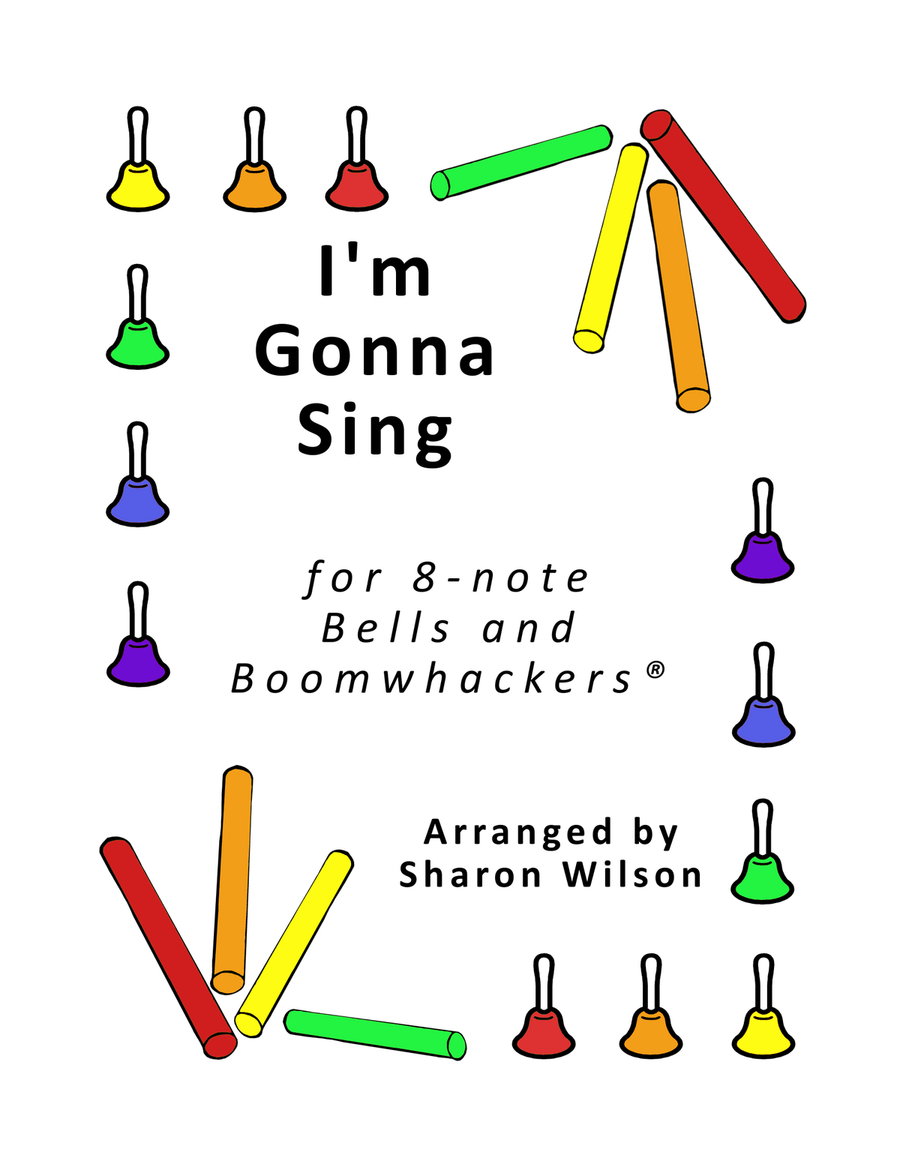Bells,Boomwhackers,Handbell,Multi-Percussion,Orff Instrument,Recorder,Ukulele,Voice,Xylophone - Level 1 - Digital Download SKU: A0.565148 By Sharon Wilson. By African-American Spiritual and Traditional Spiritual. Arranged by Sharon Wilson. Children,Folk,Instructional,Sacred,Spiritual. 9 pages. Sharon Wilson #3497139. Published by Sharon Wilson (A0.565148). This sheet music is notated for handbells on one staff and Boomwhackers® on a second staff creating an instrumental ensemble (requires one set of each instrument). Handbells play the melody while the Boomwhackers® keep a steady beat with three-note chords. Included in this set of scores is a combined score with both instrument parts on a grand staff plus a separate 1-staff score for each instrument. This set of scores uses black and white noteheads. This same set of scores is available (sold separately) with color coded noteheads which may make it easier for beginning players if you have access to a color printer.Notes used for each instrument are as follows: Bells ~ D E G A B C* where C* is high C, one octave above middle C  Boomwhackers® ~ C D E G A B C*Though this sheet music is notated for Handbells and Boomwhackers®, this arrangement is playable by any 8-note, C major diatonic scale (one octave) instrument such as a xylophone or glockenspiel.Only filled noteheads (quarter and eighth notes) are used so the notes are easier to see (this does not indicate the bells need to be silenced immediately before the next beat). Also, only quarter and eighth rests are used to help visualize the number of beats per measure. Lyrics and chord names are provided as well to aid in the learning and teaching of this song. The staves are shown without sharps or flats for simplicity since even though this song is actually written in the key of G major, no sharps or flats are used.The number of ringers and whackers needed will vary depending on the skill level of the participants. For more advanced players, each person could be assigned two notes. For beginners, it is best to assign one note to each person. Instrument assignment suggestions are provided on the last page for 7 or 13 players.Other suggestions and uses: * have both parts played by bells or both parts played using only Boomwhackers®* form a choir using multiple sets of bells and/or Boomwhackers® (this would amplify the sound and allow more people to participate)* use as part of the music education for children at school, home, or church* these colorful, inexpensive instruments can be enjoyed by all ages and add a fun, unique element to activities and programs: senior centers, family reunions, church retreats, home school groups, just to name a few Permission is granted to make up to 10 copies of each score. For more than 10 copies, please purchase additional sets.This arrangement is one of the 10 songs included in the collection Ten Traditional Spirituals for 8-Note Bells and Boomwhackers®.Boomwhackers® is a registered trademark of Rhythm Band Instruments, LLC. Used by permission. Visit Sharon Wilson's website: www.SharonWilsonMusic.comSubscribe to her YouTube Channel: www.youtube.com/user/SharonWilsonMusic
